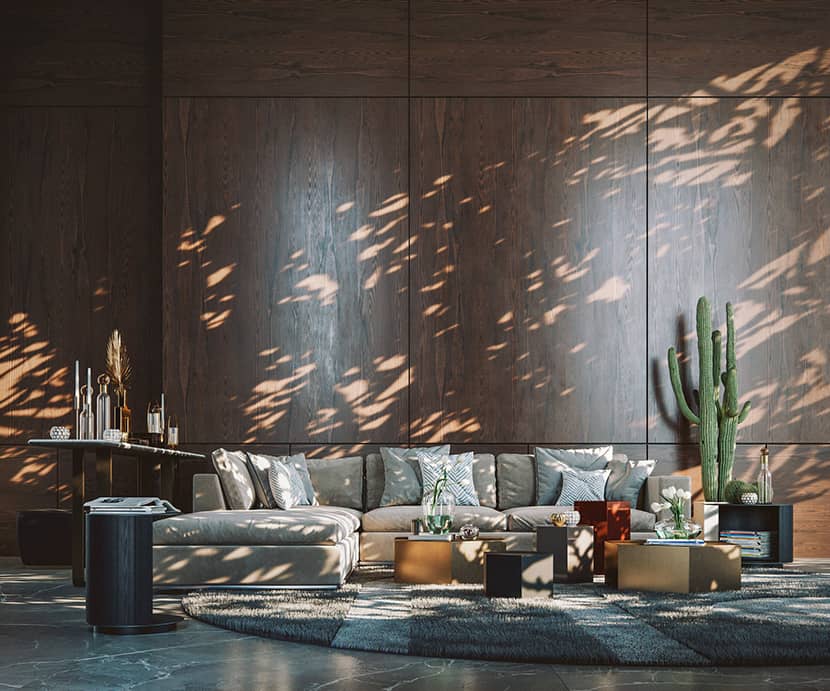
Ready to transform your lighting setup from drab to fab? Travel into the world of gobo lighting, where stencils and light sources team up to create stunning visual effects. Whether you're in theater, film, events, or 3D rendering, gobo lighting adds that magical touch to your projects. Let’s explore how you can make your lights shine like never before!
Introduction to Gobo Lighting
Ever felt like your lighting setups were missing that extra bit of oomph? Enter Gobo lighting! It's like giving your lights a personality. Imagine your lighting setup is at a party, and you hand it a megaphone to shout out, "I'm fabulous!" That's what Gobo lighting does. It transforms a plain, dull light into a dynamic, pattern-projecting superstar.
What on Earth is Gobo Lighting?
Gobo lighting sounds fancy. It stands for "GOes Before Optics." Think of it as a stencil for light. You put a gobo (a metal, glass, or plastic cut-out) in front of a light source, and voila! You project patterns, shapes, or even images. It's like magic but without the wand and rabbits. This technique is a favorite in theaters, films, events, and 3D rendering. It adds drama, depth, and that oh-so-important wow factor.
Where Do People Use These Fancy Lights?
Gobo lights are the Swiss Army knives of the lighting world. They create mood and atmosphere in:
- Theaters: Think of spooky forests or romantic sunsets.
- Film Sets: They add visual interest and realism, like dappled sunlight filtering through leaves.
- Events: Gobos project logos or astonishing patterns to jazz up the venue.
- 3D Rendering: They help create lifelike scenes by simulating real-world lighting effects.
What is the Basic Concept of Gobo Lighting?
Now that we've whetted your appetite let's dive into the nuts and bolts of gobo lighting.
Defining Gobo Lights.
Gobo lights are essentially regular lights with a twist. You take a stencil (the Gobo), place it before your light source, and project its pattern onto a surface. It's like shadow puppets but way more relaxed and more sophisticated. The term "Gobo" is a fun trivia piece for your next cocktail party.
Materials Used for Gobo Patterns.
Gobos come in various materials, each with its own set of perks and quirks.
- Metal Gobos: These are heavy-duty gobos that are perfect for long-term use. They're durable and can handle high heat, but they’re limited to simpler designs due to the need for structural integrity.
- Glass Gobos: For those who crave intricate designs and color, glass gobos are your go-to. They can project detailed patterns and are available in vibrant colors. However, they’re delicate divas and need careful handling.
- Plastic Gobos: Budget-friendly and versatile, plastic gobos are great for short-term use. They’re not as durable as metal or as detailed as glass, but they do the job without breaking the bank.
Applications of Gobo Lights.
Gobo lights are incredibly versatile, finding their place in a variety of settings to enhance visual appeal and create stunning effects. Let's explore how they're used to bring scenes to life in different fields.
Theater and Stage Productions.
In theater, Gobo lights are like the fairy godmother’s wand. With a flick of a switch, they transform mundane stages into enchanting forests or bustling cityscapes. Need to simulate a forest? Easy-peasy. Just pop in a gobo with a tree branch pattern, and you’re all set. The audience will be lost in the woods without ever leaving their seats.
Film and Television.
Gobos are the unsung heroes of the silver screen. They add depth and realism to scenes, making them visually stunning. Want to simulate the gentle sway of leaves in the wind? A leafy gobo pattern can create that dappled sunlight effect. They’re also used for practical effects, like simulating window frames or streetlights, adding layers to the visual narrative.
Photography.
Gobo lights are a game-changer in photography, allowing photographers to create unique and captivating images. Photographers can add depth, contrast, and a touch of artistry to their shots by projecting patterns, textures, or shapes onto their subjects or backgrounds. Whether casting dramatic shadows, simulating natural light effects, or adding a whimsical pattern to a portrait, gobo lighting opens up a world of creative possibilities. It's like having a portable, customizable backdrop that can transform an ordinary photo shoot into an extraordinary visual narrative.
3D Rendering.
In 3D rendering, gobos are like the secret sauce that pops digital scenes. They're used to create realistic lighting effects by simulating the interplay of light and shadow. Using texture maps and image planes, 3D artists can replicate the look of Gobo lighting. Setting up gobo lights in software like Blender involves a few steps, but the results are worth the effort. For complex scenes, the rendering process can be expedited by utilizing a render farm, which provides extensive computational power.
Practical Tips for Using Gobo Lights.
When it comes to using gobo lights effectively, a bit of know-how goes a long way. Whether you're a seasoned lighting designer or a curious beginner, understanding the nuances of Gobo lighting can make all the difference. From choosing the right materials to perfecting the placement and positioning, these practical tips will help you harness the full potential of Gobo lights. Let’s delve into the essential techniques to elevate your lighting game and bring your creative visions to life.
Choosing the Right Gobo.
Selecting the right gobo is like choosing the perfect outfit. It depends on the occasion. Consider the material (metal, glass, plastic), the design (simple or intricate), and the light source (type and intensity). Each factor influences the final look of your projection.
Placement and Positioning.
Placement is everything. Position your gobo light too far, making your pattern look faint and unfocused. It's too close, and it might overpower the scene. Aim for the Goldilocks zone—not too hot, not too cold, just right. Also, consider the angle. A slight tilt can dramatically change the effect, creating dynamic and engaging visuals.
Combining Gobos with Other Lighting Techniques.
To maximize impact, combine gobos with other lighting techniques. Use colored gels to add a splash of color or layer multiple Gobos to create complex scenes. The key is experimenting and finding combinations that enhance your project's visual appeal.
Case Study: 3D Rendering Project.
Let's peek at a 3D rendering project where Gobo Lights stole the show. Picture a cozy, sunlit room in a digital environment. Using a leafy gobo pattern, the artist created a realistic, dappled sunlight effect, adding warmth and depth to the scene. This technique elevated the project, making it feel like a photograph rather than a digital render.
 "Cacti Villa" by Sbeih Sleiman from Kframe Studio.
"Cacti Villa" by Sbeih Sleiman from Kframe Studio.
Advanced Gobo Lighting Techniques.
Once you've mastered the basics of gobo lighting, it's time to take your skills to the next level with some advanced techniques. These methods push the boundaries of creativity, allowing you to create dynamic and intricate lighting effects that captivate any audience. From animating gobos for a sense of motion to layering multiple gobos for complex scenes, these advanced techniques offer endless possibilities. Let’s explore how you can elevate your lighting designs from impressive to truly spectacular.
Animation Gobos.
Static patterns are great, but why stop there? Enter animation gobos. These create moving patterns, adding a layer of dynamism to your lighting. Imagine the effect of moving clouds or flowing water projected onto your stage or set. It’s like turning your lights into a mini movie projector.
Animation Gobos.
Why settle for one gobo when you can have two, or three, or more? Layering gobos allows for complex and intricate scenes. You can project a background pattern with one gobo and add foreground details with another. It’s like painting with light, giving you endless creative possibilities.
Conclusion.
Gobo lighting is a powerful and versatile tool that can transform any project. From theaters and film sets to 3D renders and live events, Gobos adds depth, realism, and a touch of magic. So, don't be afraid to experiment. Give your lights a voice, let them shout, "I'm fabulous!" and watch your projects come to life with stunning visual effects.
Thanks to the variety of videos and insights shared, we hope you enjoyed this enlightening journey through Gobo Lighting Techniques and gained a solid understanding of the basics and beyond.
Kind regards & keep rendering! 🧡

About the author
Vasilis Koutlis, the founder of VWArtclub, was born in Athens in 1979. After studying furniture design and decoration, he started dedicating himself to 3D art in 2002. In 2012, the idea of VWArtclub was born: an active 3D community that has grown over the last 12 years into one of the largest online 3D communities worldwide, with over 160 thousand members. He acquired partners worldwide, and various collaborators trusted him with their ideas as he rewarded them with his consistent state-of-the-art services. Not a moment goes by without him thinking of a beautiful image; thus, he is never concerned with time but only with the design's quality.
